Although better known for passenger transport, the Met also had a large goods
trade.
This is just a selection, based on drawings and photos in the book
Metropolitan Railway Rolling Stock by James R Snowden.
 |
Description |
Model Scales |
|
|
|
|
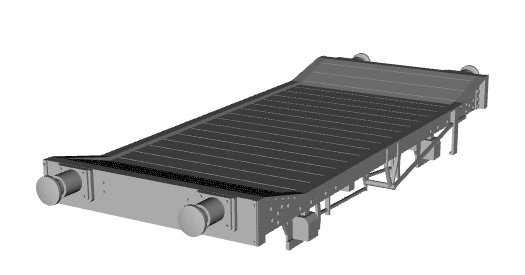 |
Metropolitan Railway 10 ton Machinery Wagon
Three machinery wagons supplied in 1903 for transporting large items such as farm equipment which was too big for other wagons.
All scrapped 1938/9.
Requires finishing off, wheels etc
|







|
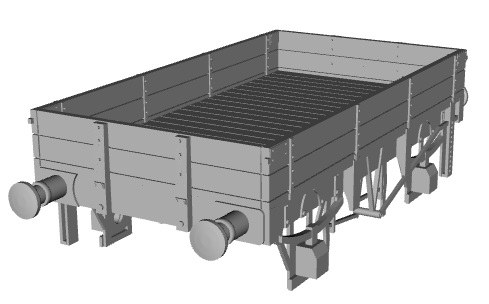 |
Metropolitan Railway 6 ton ballast wagon(post 1927)
50 supplied from 1861 to 1882, possibly based on original contractors' wagons. May have also had dumb buffers, but no details known, so this is in post 1927 condition.
One was rebuilt as a stores van.
Requires finishing off, wheels etc
|







|
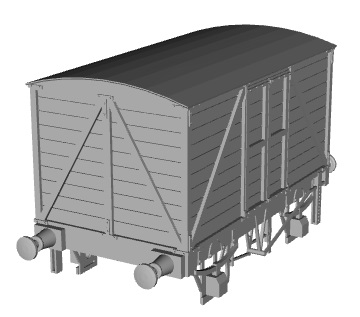 |
Metropolitan Railway Stores Van
Stores van rebuilt from one ballast wagon. No record of which ballast wagon.
Requires finishing off, wheels etc
|







|
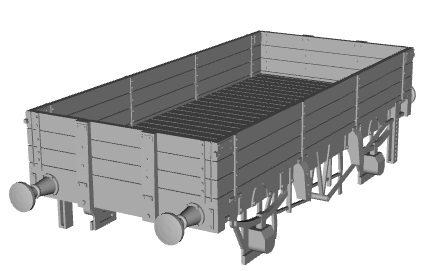 |
Metropolitan Railway 16ft Low Sided open goods wagons
Built in large numbers from 1891 to 1904 by various wagon builders using standard Met length of 16ft , but on 9ft 6in wheelbase.
Many got rebuilt as high sided opens. Some were also rebuilt as covered goods vans.
Many were running into the 1960s.
|







|
 |
Metropolitan Railway 16ft High Sided open goods wagons
Introduced in 1903, using standard Met length of 16ft , on 9ft wheelbase.
Many were running into the 1960s.
|







|
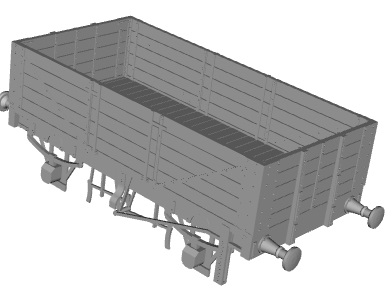 |
Metropolitan Railway 14ft 11in High Sided open goods wagons
Introduced in 1903, using RCH length of 14ft 11in , on 9ft wheelbase.
Many were running into the 1960s.
|







|
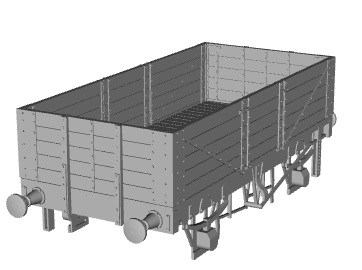 |
Metropolitan Railway 16ft High Sided open goods wagons
(Low Sided conversion)
Rebuilt from low sided wagons using standard Met length of 16ft , but on original 9ft 6in wheelbase.
Many were running into the 1960s.
Requires finishing off, wheels etc
|







|
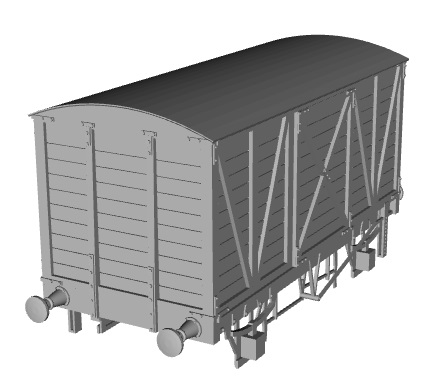 |
Metropolitan Railway Covered Goods Vans
Covered van only appeared from 1896, supplied by Birminghan C&W, similar to Midand design but with both side doors opening to same end.
more supplied by both Ashbury and Metropolitan C&W in 1903-4.
After initial new built vans supplied no new vans until 1913.
Requires finishing off, wheels etc
|







|
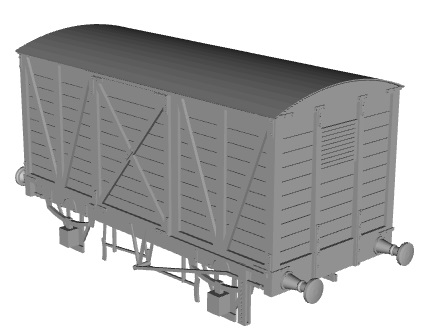 |
Metropolitan Railway Covered Goods Vans
With end vents
Covered van only appeared from 1896, supplied by Birminghan C&W, similar to Midand design but with both side doors opening to same end.
more supplied by both Ashbury and Metropolitan C&W in 1903-4.
After initial new built vans supplied no new vans until 1913.
Converted from single rail carrying trucks in 1913.
Requires finishing off, wheels etc
|







|
 |
Metropolitan Railway Covered Goods Vans 22ft conversions
Covered van only appeared from 1896, supplied by Birminghan C&W, similar to Midand design but with both side doors opening to same end.
more supplied by both Ashbury and Metropolitan C&W in 1903-4.
After initial new built vans supplied no new vans until 1913.
Converted from single rail carrying trucks in 1913.
Converted from redundant twin rail carrying wagons1913-14.
Requires finishing off, wheels etc
|







|
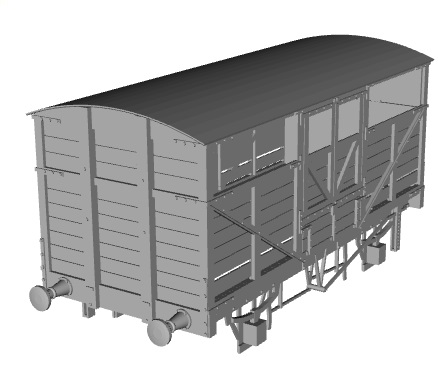 |
Metropolitan Railway Cattle wagon
Six cattle wagons to a Neasden design were supplied by Cravens in 1994. Six more were built in 1914 using chassis from redundant twin rail wagons.
Requires finishing off, wheels etc
|







|
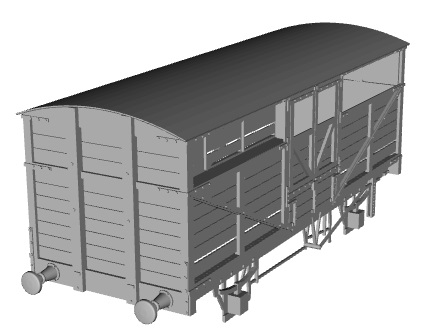 |
Metropolitan Railway 22ft Cattle wagon
Six cattle wagons to a Neasden design were supplied by Cravens in 1994. Six more were built in 1914 using chassis from redundant twin rail wagons.
Requires finishing off, wheels etc
|







|
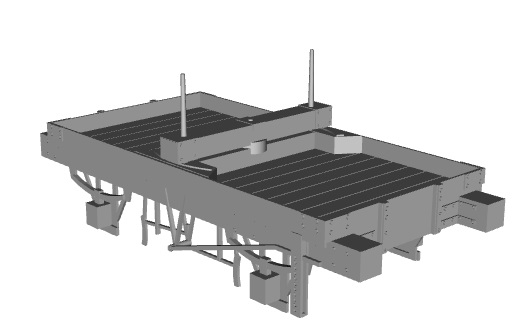 |
Metropolitan Railway Rail/Timber Bolster Wagon
Dumb buffered version
Six of these wagons built around 1897 for moving rail and timber.
Originally fitted with dumb buffers, which were soon replaced.
After becoming redundant with building of longer twin wagons to transport longer rails, they were used as parts for new
covered goods vans in 1914.
Requires finishing off, wheels etc
|







|
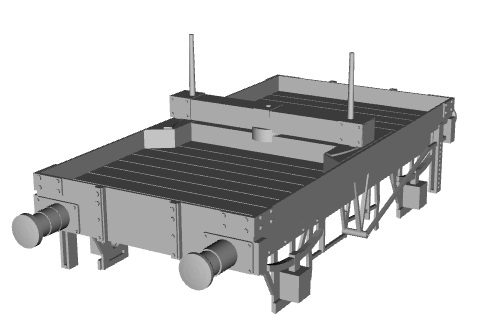 |
Metropolitan Railway Rail/Timber Bolster Wagon
Six of these wagons built around 1897 for moving rail and timber.
Originally fitted with dumb buffers, which were soon replaced.
After becoming redundant with building of longer twin wagons to transport longer rails, they were used as parts for new
covered goods vans in 1914.
Requires finishing off, wheels etc
|







|
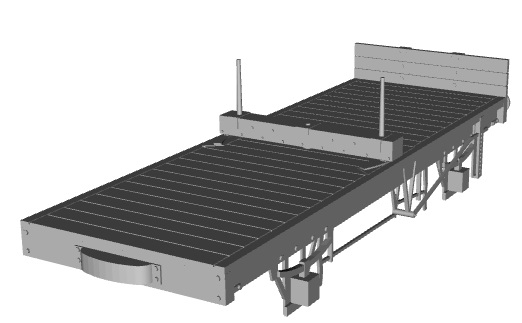 |
Metropolitan Railway 20 ton Twin Rail Bolster Wagon
With longer rail being required, new 22ft long wagons ,in pairs were built in 1914.
After doing their initial job, most were rebuilt as covered goods van, cattle wagons and other
departmental wagons in 1919.
Requires finishing off, wheels etc
|







|
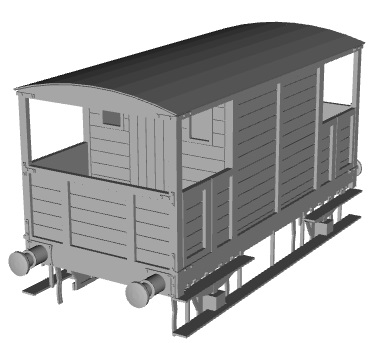 |
Metropolitan Railway Brake Van
Nos 1-3
Between 1866 and 1890 the railway introduced 6 new brake vans, Numbers 1 - 3 were goods brakes vans, numbers 4 and 5 were ballast brake vans. No details for
number 6 are known.
No 1 scrapped 1962,no 4 scrapped 1950. last one(no 5) scrapped 1969.nos 3 and 6 sold to Bute Works Supply Co 1907.
Requires finishing off, wheels etc
|







|
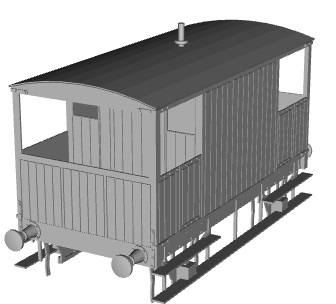 |
Metropolitan Railway Brake Van
Flush sided version
From 1893 new design based on original with flush sides built by Ashbury and Cravens.
last scrapped in 1969.
10t Ballast Brake
At least 2 of these built to be used with ballast trains .
One was sold to Bute Works Supply Co and other scrapped 1969.
Requires finishing off, wheels etc
|







|
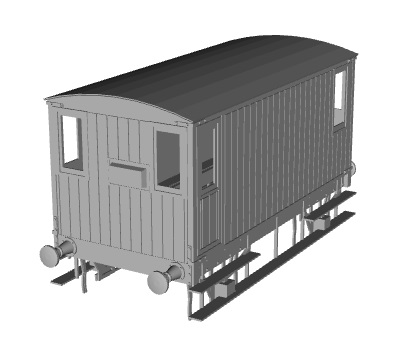 |
Metropolitan Railway Brake Van
10t Ballast Brake
At least 2 of these built to be used with ballast trains .
One was sold to Bute Works Supply Co and other scrapped 1969.
Requires finishing off, wheels etc
|







|
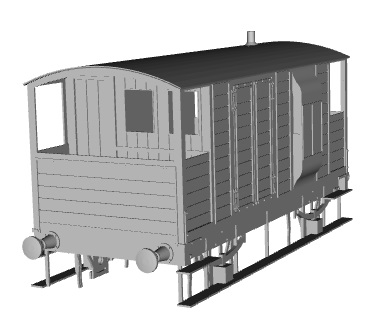 |
Metropolitan Railway 20ton brake van, ex WD LSWR design
During WW1 the War Department had a number of brakevans built based on one of the LSWR
road van designs.They were 2in narrower and 6in longer.
At end of the war the brakevans were sold off and several railways including the Met bought some. Other railways were the CR, GCR, GER, GNSR, LNWR,LSWR and the NER. The Southern Railway bought the
remaining brakevans in 1924.
The Met had no need for the van compartment so when it was found that the side doors created a draft they were removed and replaced with matching
paneling. The side lookouts were then removed and replaced with matching paneling
in 1926.
The last ones were scrapped in the 1940s.
Requires finishing off, wheels etc
|







|
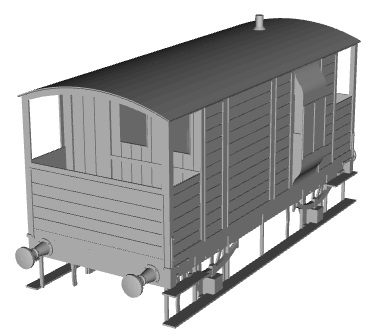 |
Metropolitan Railway 20ton brake van, ex WD LSWR design
Modified no side doors
During WW1 the War Department had a number of brake vans built based on one of the LSWR roadvan designs.They were 2in narrower and 6in longer.
At end of the war the brakevans wre sold off and several railways including the Met bought some. Other railways were the CR, GCR, GER, GNSR, LNWR,LSWR and the NER. The Southern Railway bought the remaing brakevans in 1924.
The Met had no need for the van compartment so when it was found that the side doors created a draft they were removed and replaced with matching panelling. The side lookouts were then removed and replaced with matching panelling in 1926.
The last ones were scrapped in the 1940s.
|







|
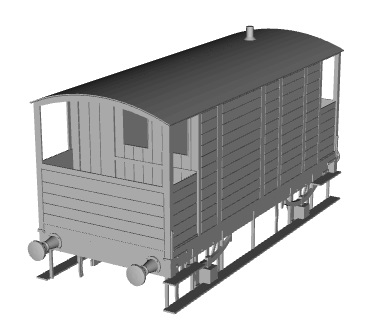 |
Metropolitan Railway 20ton brake van, ex WD LSWR design
Final condition, no side lookouts
During WW1 the War Department had a number of brakevans built based on one of the LSWR
road van designs.They were 2in narrower and 6in longer.
At end of the war the brakevans wre sold off and several railways including the Met bought some. Other railways were the CR, GCR, GER, GNSR, LNWR,LSWR and the NER. The Southern Railway bought the
remaining brakevans in 1924.
The Met had no need for the van compartment so when it was found that the side doors created a draft they were removed and replaced with matching
paneling. The side lookouts were then removed and replaced with matching paneling
in 1926.
The last ones were scrapped in the 1940s.
|







|
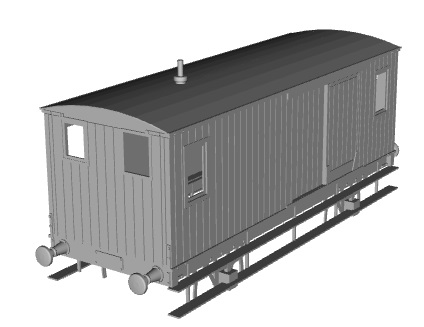 |
Metropolitan Railway 22ft 14 ton Ballast Brake Van
Two built in 1914 on 22ft chassis of redundant twin rail wagon.
Scrapped 1969
Requires finishing off, wheels etc
|







|
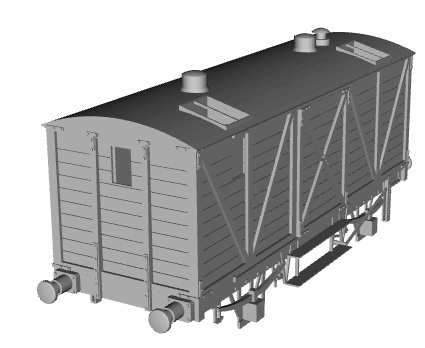 |
Metropolitan Railway Weighbridge Adjusting and Workshop Van
Two of these special vans wee built on redundant gas wagons chassis on 1919.
They were similar to long van bodied vans which were built on chassis of paired rail and timber wagons. As with other Metropolitan vans doors opened to same end.
Requires finishing off, wheels etc |






|


